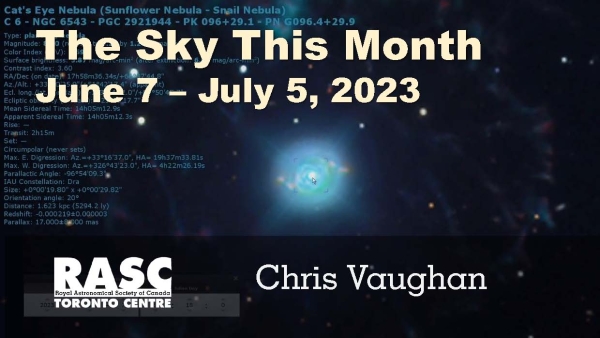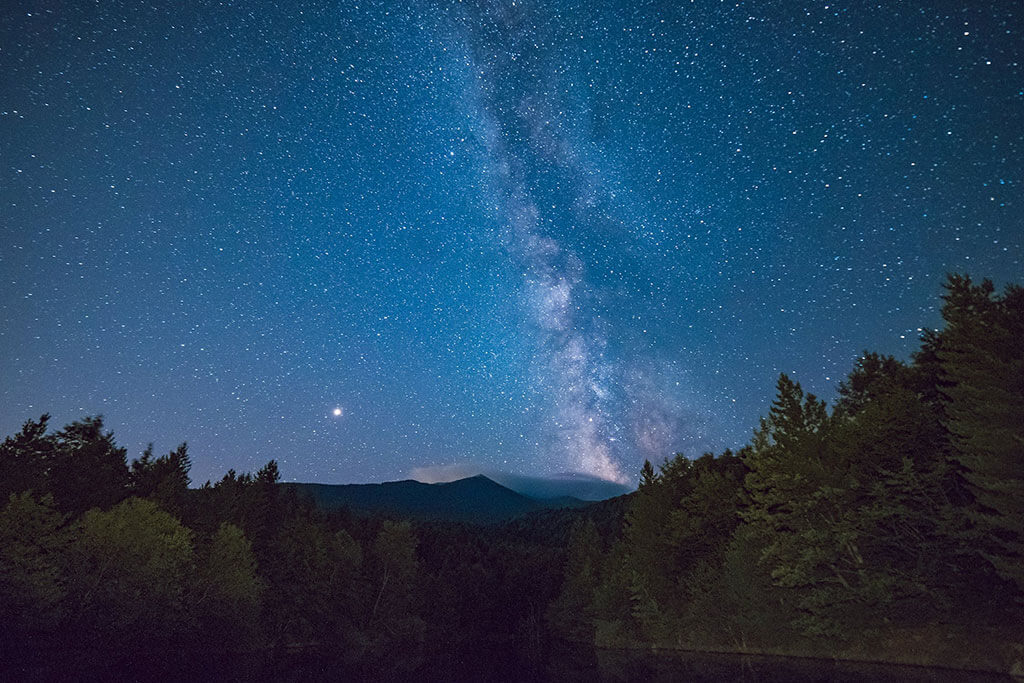
7
June
The Sky This Month - June 2023
Our resident expert, Chris Vaughan, on all things in Astronomy takes his hand at the Sky This Month for the period of June 7-July 5 2023.

7
May
DDO: Sunday Sungazing - May 2023
Safely observe the sun with us! Join us at the DDO for these family-friendly sessions where a DDO Astronomer will answer your questions about our closest star: the sun!

29
May
Stargazing Night - May 2023
Join us at sunset to learn to use star charts and basic observing techniques, then use your binoculars to follow a guided tour through the night sky, and stay after the tour to practice your new skills.

1
March
The Sky This Month - March 2023
Wondering what's happening above your head in the sky this month?
Find out more about the Zodical Light to the Messier Marathon to everything in between, including comets, planets and spaceflights!

7
March
Public Stargazing in Courtice (GO for Tuesday)
Come out to learn the late-winter/early-spring constellations and enjoy stargazing behind the Courtice Community Complex.

9
May
RASC National Society: The Insider's Guide to the Galaxy - Women in Astronomy (ONLINE)
Join us online to learn basic astronomy that you can do on your own from your backyard!
We'll share tips on encouraging girls to engage in astronomy and highlight the women of Harvard who laid the foundation of modern astronomy.

25
April
RASC National Society: The Insider's Guide to the Galaxy - De-Mystifying Magnitude and Brightness (ONLINE)
Join us online to learn basic astronomy that you can do on your own from your backyard!
The spring sky hosts both very bright stars and very dim galaxies.
We'll talk about the system astronomers use to measure and report the brightness of celestial objects - from luminosity to absolute and apparent brightness, to surface brightness.

28
February
RASC National Society: The Insider's Guide to the Galaxy - Touring the Imbrium Basin (ONLINE)
Join us online to learn basic astronomy that you can do on your own from your backyard!
With the moon waxing in the evening sky, this is the perfect time to watch the terminator slide across the giant and ancient lunar basin of Mare Imbrium.

25
February
DDO: Up In The Sky (Online)
Join us from the comfort of your home as we discuss about what exciting celestial events to look for each season.

31
January
RASC National Society: The Insider's Guide to the Galaxy - Touring the Winter Milky Way and Cold Weather Observing (ONLINE)
Tuesday, January 31, 2023 - 3:30pm to 5:00pm
